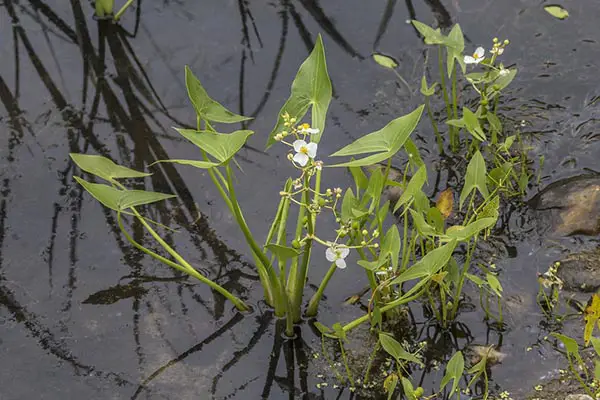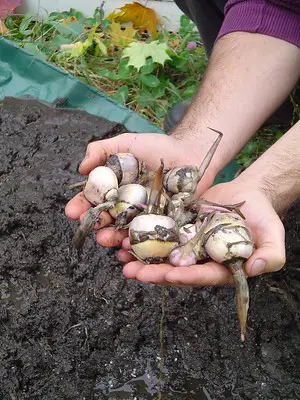Arrowhead plant is one of the finest, easy-care aquatic plants for pond garden, but it can be grown in a large container as well. With its foliage and flowers that bloom all summer long, it makes such a wonderful display. Read on to learn how to grow and take care of arrowhead pond plant.

What is an Arrowhead Pond Plant?
Arrowhead aquatic plant or duck-potato (Sagittaria latifolia) is a colony-forming plant usually found in shallow wetlands such as swamps, ditches, and slow streams, but it’s widely cultivated as one of the most attractive pond plants. Other common names include broadleaf arrowhead, Indian potato or wapato.
The plant’s most valuable feature are its highly ornamental, heart-shaped leaves, hence the name arrowhead plant. Although the plant spreads horizontally, the leaves can reach up to 12 in (30 cm), providing a bit of vertical interest as well. Arrowhead pond plant develops showy white flowers that bloom all summer long.
In the mud, plant’s rhizomes develop specific starchy tubers that are considered edible. These tubers once were an important source of food for ingenious people of Latin America.
Note: Arrowhead aquatic plant should not be confused with arrowhead plant (Syngonium podophyllum). While arrowhead aquatic plant is considered edible, Syngonium pedophyllum is a toxic plant that can cause serious health problems when ingested.
How to Plant and Propagate Arrowhead Pond Plant?
The easiest method for planting arrowhead aquatic plant is purchasing a live plant from a nursery and planting it directly into the wetland soil.
You can also collect wild plants since they are easily pulled out of the water. The roots should always remain moist or in water until planted. Place the plants in wetland soil or in shallow water.
Arrowhead aquatic plant can be propagated through rhizomes and arrowhead seeds. Growing through seeds can be a long process since the seeds need two years to germinate, so the recommended propagation method is rhizome division. However, if you decide on seed planting, just scatter the seed into the wetland soil. For rhizome propagation, divide a rhizome in the spring.

If you don’t have a pond, you can grow it in a planting basket or a container filled with a mix of 70% good quality topsoil (with loam or clay) and 30% compost. Don’t use lightweight soil because that type of soil tends to float on water. Fill the container with soil, but leave space for water to be added later.
Growing Conditions for Arrowhead Aquatic Plant
Arrowhead aquatic plant is easy to grow if planted in wetland-like habitat, although it’s quite adaptable. It’s extremely hardy (-20ºC or -4ºF), so it can be easily grown in many regions, even in those with harsh winters.
Arrowhead aquatic plant likes extremely wet soil or shallow, quiet ponds. It prefers 5.9 in (15 cm) to 17.7 in (45 cm) of water with no or little current, but thanks to its strong roots, it can survive slow currents and a wide variety of water levels. Arrowhead aquatic plant likes high phosphate levels and hard waters, but the surface water actually has these characteristics, so fertilization is mostly unnecessary.
Light requirements: The plant tolerates a wide range of light conditions, from part shade to full sun.